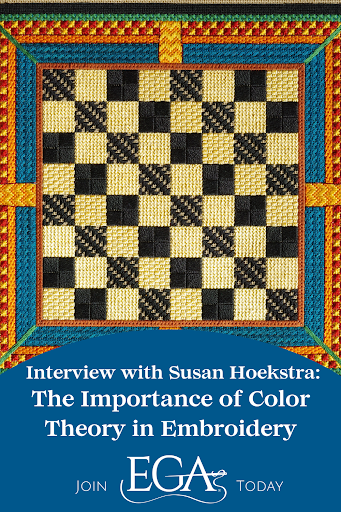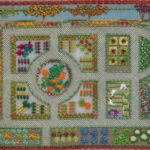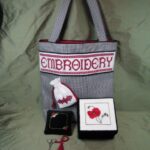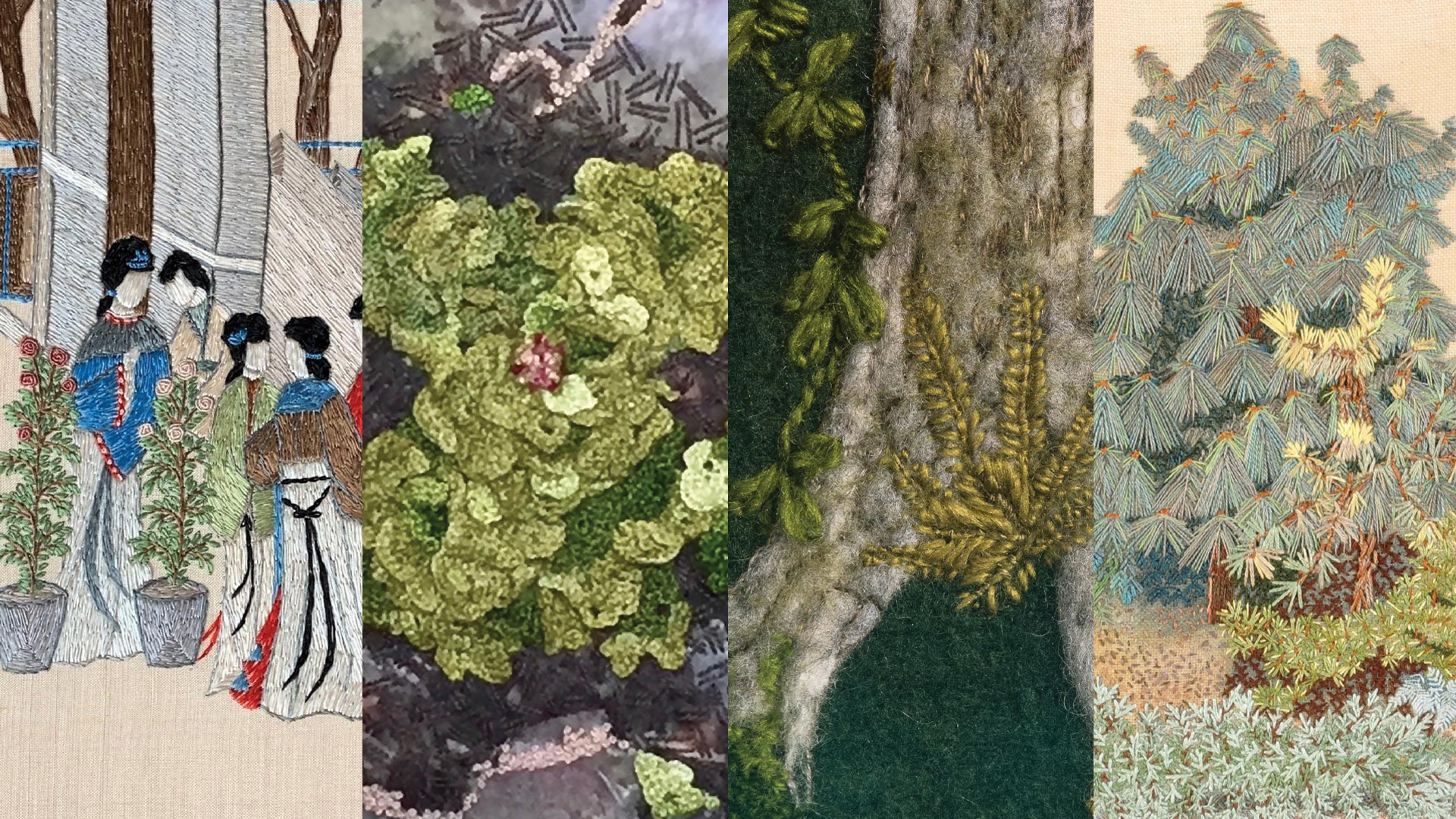Susan Hoekstra is an American Needlepoint Guild Certified Senior Master Teacher, with additional certifications from the Royal School of Needlework in Silk Shading and Gold Work. Susan’s passion for exploring the relationships between colors has informed much of her work. She believes color creates “a welcoming environment for viewers” of embroidery pieces. As such, a proper understanding of colors and how they interact is essential for every needleworker. We tapped Susan ahead of her color theory embroidery class, A Thread for All Seasons, to learn more about her approach to color theory and why it’s one of the most important aspects of creating engaging, effective embroidery pieces. Registration for A Thread for All Seasons is open through April 3, 2024.
Your upcoming class “A Thread For All Seasons” dives into developing a feeling for color. Why do you think an understanding of color theory is essential to needlework?
It is essential for needlework because we, as stitchers, want to create a composition which makes the viewer want to visit the piece and stay engaged with it. We want them to do this for as long as possible.
Color is one of the most essential pieces of needlework and the understanding of color theory is essential to creating a welcoming environment for the viewers of the piece, engaging them within your design for a good length of time.
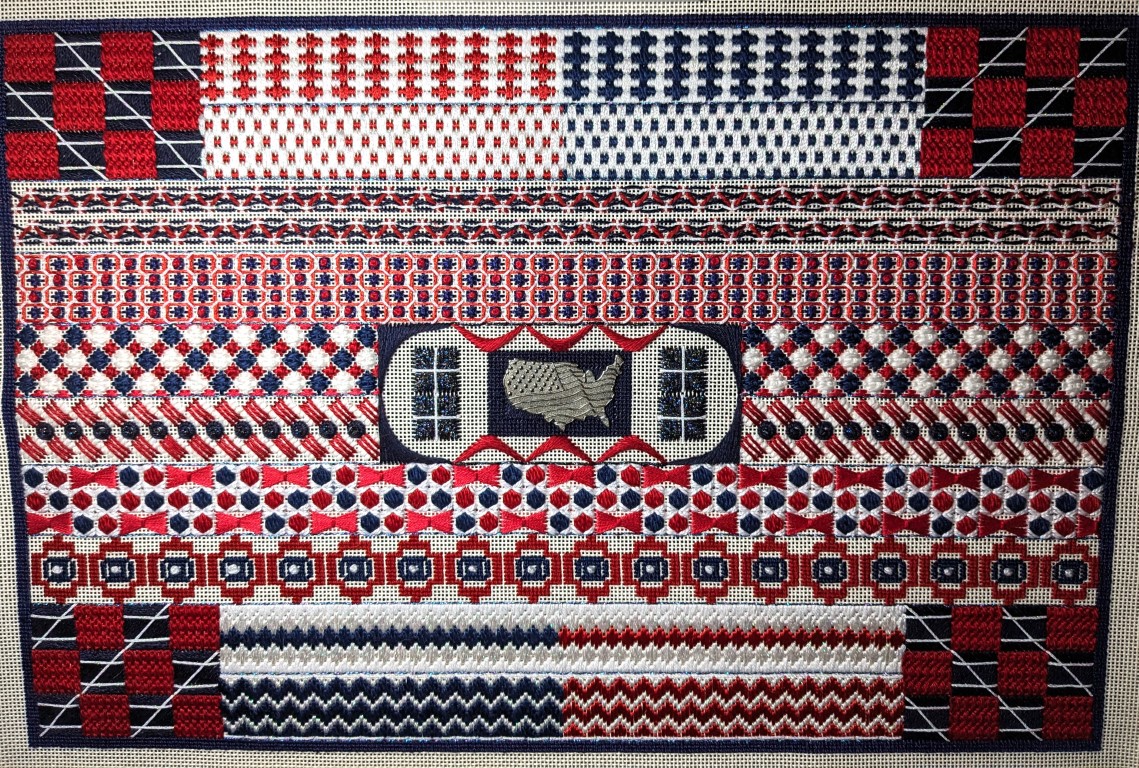
There are many rules when it comes to color theory. Have you found instances where it can work to break those rules?
Not really. I have found it is best to adhere to even the least important aspect of color theory. I understand many artists over the centuries have looked at the same ideas and theories I look at daily and since they have figured it all out and made it work, I believe in appreciating and thanking them for their hard work by utilizing their ideas and processes.
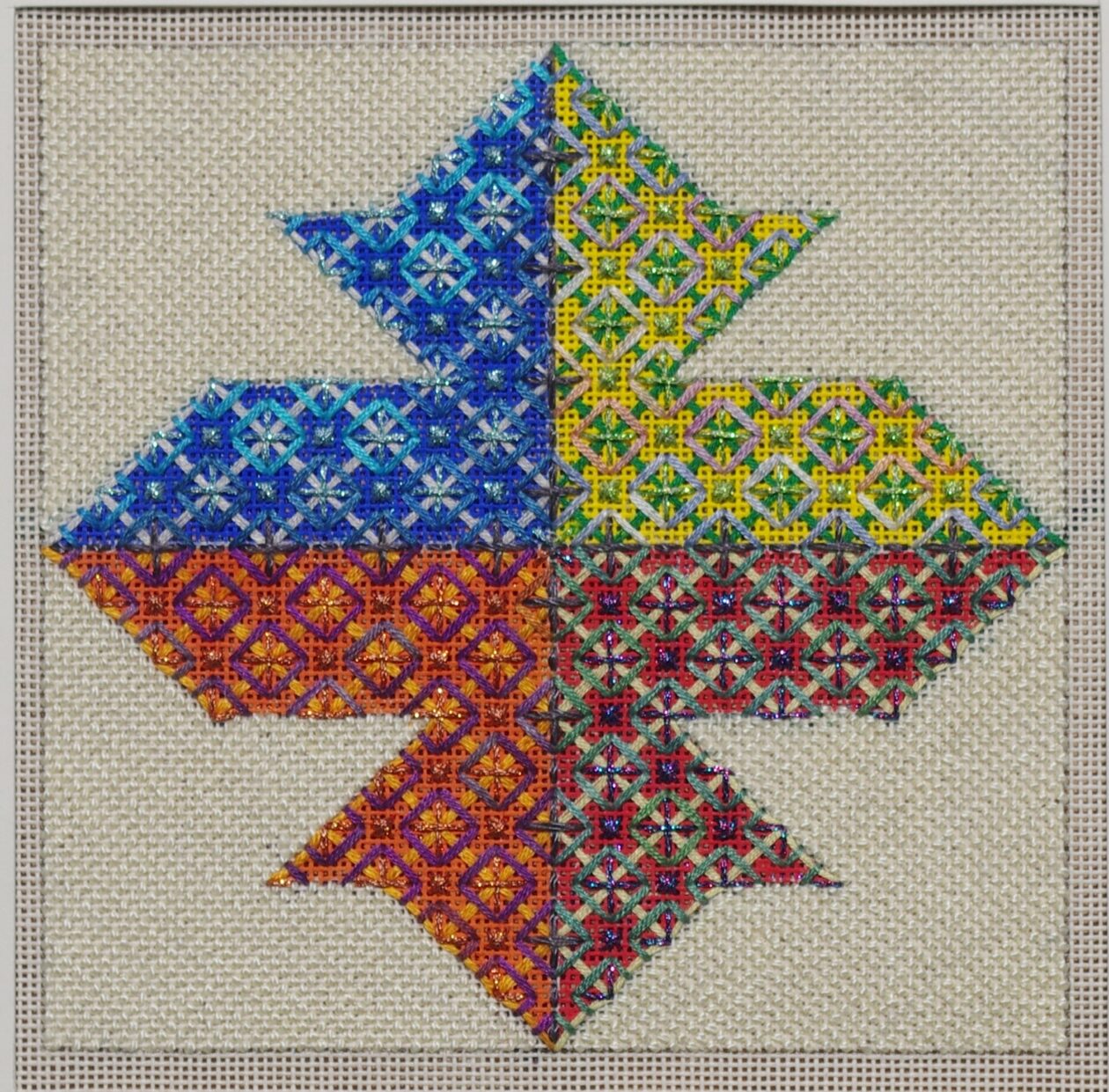
Do you have a needlework example or design that showcases some of your favorite color themes?
I am very happy when I am able to distinguish value changes within a piece of work. Using, and understanding, a value scale is important in creating interesting pieces of needlework. My piece, The Game Is On, has good value change, complementary color usage, and a good balance.
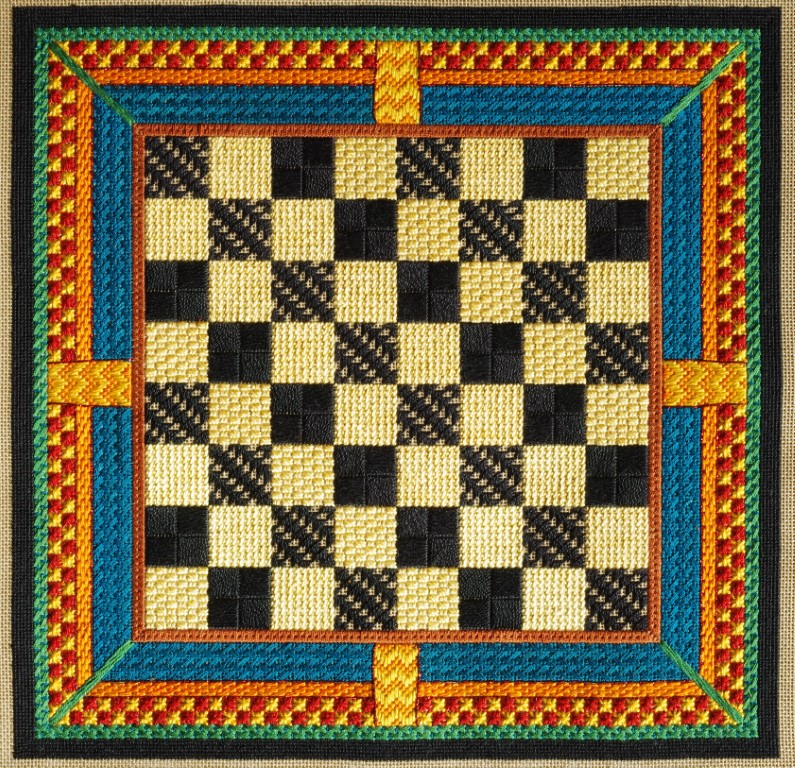
You’ve been a teacher for more than two decades, with a Senior Master teacher certification from the American Needlepoint Guild. What is your favorite needlework topic to teach? Do you have a favorite type of needlework? What drew you to color theory in particular?
My favorite topic is Color Theory and how to use it in needlework. My favorite type of needlework is canvas embellishment. However, I am also enamored with goldwork and stumpwork.
I was drawn to color theory through my work with traditional rug hooking. People who rug hook take color theory much more seriously than needleworkers. After understanding their process and criteria, I took those ideas and applied it to needlework. The rest is history.

Where do you find inspiration for your designs?
I really like to look to the natural world for inspiration. I also like animals and quilts for design ideas. However, I do not feel I need to stay within those topics and do often vary my designs!
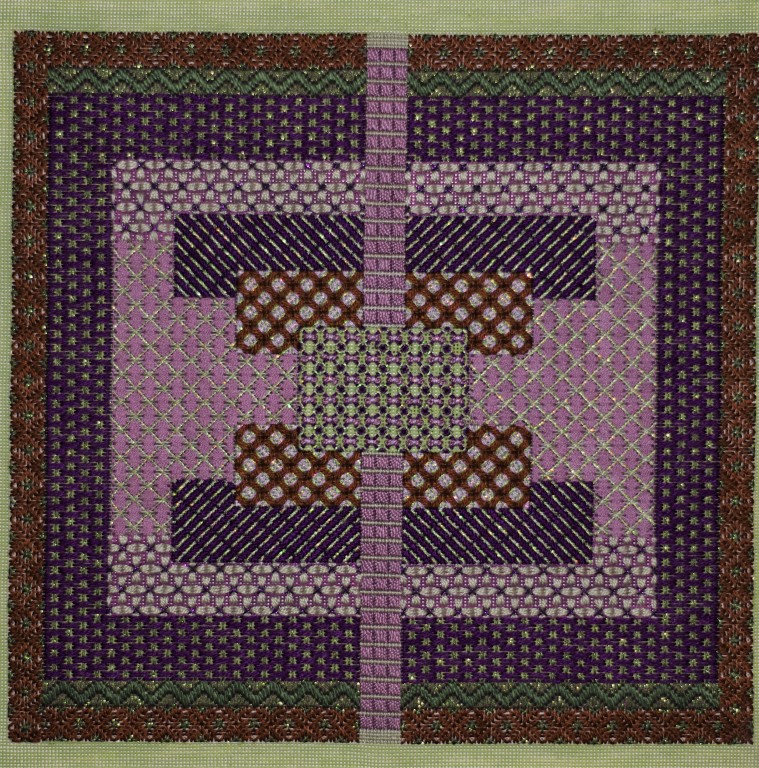
Do you have any tricks, tips, or reassurances for needleworkers who feel lost when it comes to choosing colors?
Always go with your gut. After all it is your piece, your vision, and your time. I also suggest laying out a lot of threads you are contemplating using within a design on a white sheet. Look quickly at the stack of threads and pick up the one which catches your eye first. Put it on another white sheet. You now have two separate piles going. Do this again, picking up the thread which catches your eye. Put it with the first thread you picked. Do you like it? Yes? Then carry on until you have the number of colors you need. If you do not like it, put it back and try again. Keep at it until you have all the colors you need.

What should students who sign up for one of your courses expect from the class?
Instruction on colors, how colors relate to each other, understanding why some colors work and some do not, and how to switch things in your design to make sure your vision is achieved.
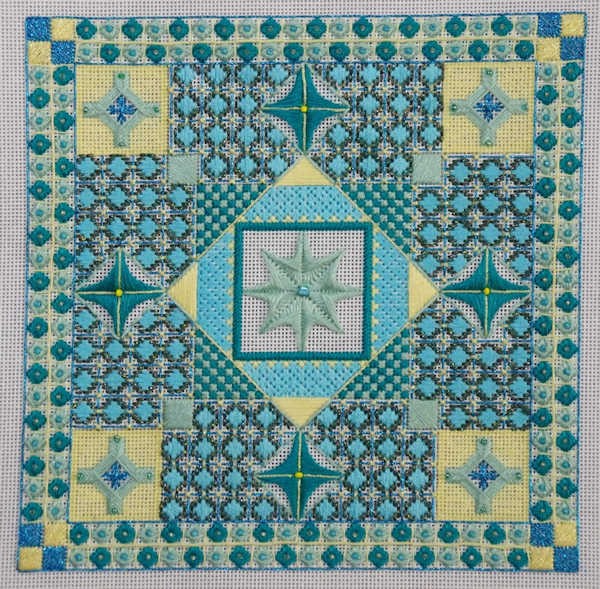
Do you have a daily/weekly practice that you’d recommend to other embroiderers interested in honing their craft?
I try to work on a new stitch every week. When I began I took the one and only needlework book I had and worked all the stitches in there until I understood how they needed to be executed. That would include compensation and the best stitching order. It was quite eye opening.

What embroidery or color trends (if any) are you drawn to right now?
I am constantly trying to reinvent standard stitches using new threads, colors, and embellishments. I believe there is a stitching trend toward this in the making. I have spoken to many stitchers who are doing the same thing.
Under color trends, I am always trying new color combinations, even if the color wheel says I should not. Most often they do not work for me, but everytime I certainly do learn a lot! It is amazing how eye opening it is to mix colors up and try a new combination – it is actually liberating!

What do you hope embroiderers take from A Thread for All Seasons?
I am hopeful they will come away with a better understanding of color and why what they have chosen works, or does not work. Each stitcher can pick from one of three color harmonies to execute. After that, it is up to them where they put their colors. I am hopeful they will mix them up and discover their own sense of color vision.
Thank you to Susan for providing insight into her process! Register for A Thread for All Seasons here.
